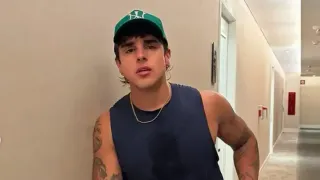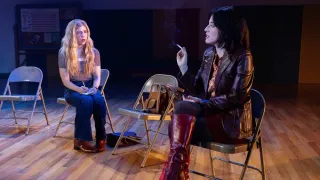February 19, 2016
US Checks Foreign Border Crossers with Eye Scans
Julie Watson READ TIME: 3 MIN.
Tijuana businessman Marco Cruz had grown accustomed to the lengthy checks by U.S. officials before entering the United States, but he was surprised he now had to scan his documents and stand in front of a futuristic-looking machine that read his the iris of his eye and facial features on his way out of the country.
The federal government is using biometric technology for the first time to verify the identities of foreigners leaving the United States on foot - a trial move aimed at closing a longstanding security gap, officials announced Thursday.
Before now, foreigners who left the country were rarely checked by U.S. authorities as they walked into Mexico or Canada through ports of entry.
"It's fine as long as it's fast and easy," said Cruz, who works for a Customs broker and crosses up to three times a week.
He was relieved to find the process took only seconds.
The checkout system that launched Feb. 11 at a busy San Diego border crossing with Mexico aims to detect people who have overstayed their visas.
"That's what we want to be able to do, is know when the person entered the country and know when they leave," said Charmaine Rodriguez, assistant port director of the Otay Mesa cargo facility.
Up to half of the people in the U.S. illegally are believed to have overstayed their visas. During the trial run, foreigners who have overstayed their visas will be allowed to continue on to Mexico, with a note on their record, officials said. Those with criminal records or warrants could be detained.
Border officials in December started collecting the same information on non-citizens walking into the U.S. through the Otay Mesa crossing connecting Tijuana and San Diego.
Congress has long demanded biometric screening of people leaving the country, but the task has posed enormous financial and logistical challenges at busy land crossings. Privacy advocates worry the data could be misused or fall into the wrong hands.
Some fear the additional screening will further clog already-congested border crossings, disrupting trade and travel. Authorities are using the trial runs to determine which technology is the fastest, most accurate and least intrusive in screening people coming and going at all land crossings along the 1,954-mile border with Mexico.
Otay Mesa was selected because it is one of the busiest border crossings. Final results are expected this summer, with the goal of expanding the checks to all land, air and sea ports.
A steady flow of people used the machines on Thursday, most taking only seconds to complete the process.
Ramon Rangel, a 29-year-old truck driver from Tijuana, walking with his bicycle scanned his documents, stepped onto painted footprints on the ground and looked up at a green light that registered his eye and facial features.
"I was surprised, but I think it's a good idea for the U.S. to know who's leaving and whether they have a visa," said Rangel, who crosses regularly and said the extra checks were very quick.
Federal officials say they will not share or retain the data collected in the trial runs, but it is not clear how the information will be used if the program is adopted permanently.
Jay Stanley, a senior policy analyst at the American Civil Liberties Union, said the data will be increasingly shared with different agencies once it becomes the norm at checkpoints. More countries also may start using the technology on Americans to build their own biometric databases.
"There are a lot of questions I think policy makers need to be asking about how this will be implemented and how it will play out in the future," he said.
Americans walking into Mexico will use a separate lane at the California crossing to scan their documents and register their departure. For the trial period, the government will use the biometric technology only on departing foreigners.






